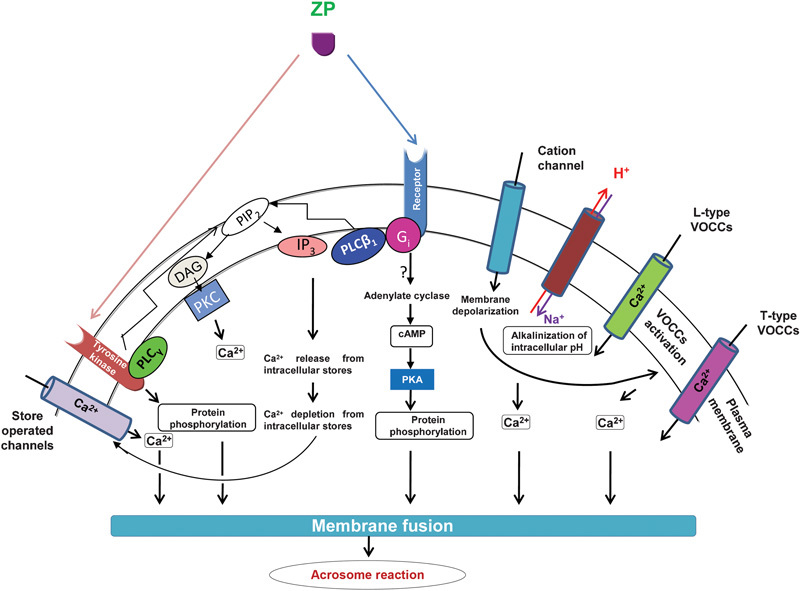Figure 2.

Schematic representation of various signalling pathways involved in ZP-mediated acrosomal exocytosis. Two prominent signalling pathways are known to operate in the sperm membrane upon ZP binding. One is the pertussis toxin sensitive Gi protein-coupled receptor linked to PLCβ1. The other is a putative tyrosine kinase receptor coupled to PLCγ. Receptor activation also induces adenylate cyclase activation, leading to the generation of cAMP and activation of PKA, which phosphorylates and activates downstream effector proteins. Agonist binding also activates cation channels present on the sperm plasma membrane, leading to membrane depolarisation and activation of L- and T-type VOCCs. An increase in intracellular alkalinisation also occurs due to activation of sodium/proton exchange pump that probably increases or amplifies calcium signals. PLCβ1 and PLCγ hydrolyse PIP2 in the membrane, leading to the generation of IP3 and DAG. DAG mediates PKC translocation to the plasma membrane and its activation, whereas IP3 mediates calcium entry into the sperm cytosol from intracellular stores. Depletion of calcium from internal stores leads to activation of voltage insensitive SOCs on the sperm cell surface by an undefined mechanism. This mediates another round of calcium entry, which leads to activation of components involved in the fusion of the outer acrosomal membrane with the sperm plasma membrane resulting in the AR. AR, acrosome reaction; cAMP, cyclic adenosine monophosphate; DAG, 1,2-diacylglycerol; PKA, protein kinase A; IP3, 1,4,5-inositol triphosphate; PIP2, phosphatidylinositol 4,5-bisphosphate; PLC, phospholipase C; SOC, store-operated channel; VOCC, voltage-operated calcium channel; ZP, zona pellucida.
